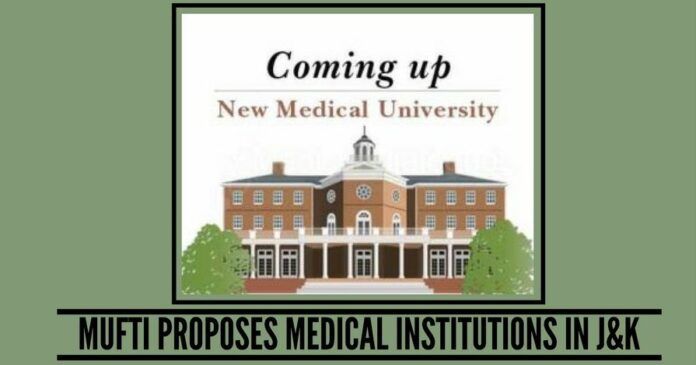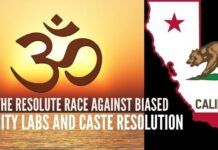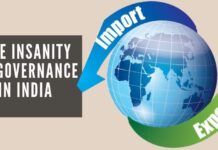
The worst part of the whole situation has been that the Kashmiri youth have swamped all the Kashmir-based technical and professional institutions.
The December 18 announcement by the Mehbooba Mufti-led PDP-BJP coalition government that it would set up one Medical University in Jammu and Kashmir is fraught with serious consequences. Announcing her decision, she said that it was her father Mufti Mohammad Sayeed’s most cherished dream and she was fulfilling it by establishing Medical University in the state. The bill to this effect will be adopted in the upcoming Brealizeession of the Assembly, she also declared.
“In an effort to realize my father’s vision, we will start the process to set up the first Medical University in Jammu & Kashmir during the upcoming Assembly session. The healthcare and education sectors are vital to our State,” she said on December 18 (Daily Excelsior, Dec 19).
Health and Medical Education Minister Bali Bhagat, who belongs to Jammu and the BJP, also endorsed the announcement of the Chief Minister. He said: “Medical University in Jammu & Kashmir will be a reality. A high-level committee has been constituted today (Dec 18). The proposal for setting up first-ever Medical University in Jammu & Kashmir would be placed for the Cabinet nod within a fortnight after which the legislation (for the University) would be tabled before the Legislature in upcoming budget session. If everything goes well, we propose to give final shape to the Medical University by next academic year,” he said (ibid).
This decision, if implemented its original form, will weaken the premier educational institution of Jammu province, University of Jammu. Besides, it will also jeopardise the legitimate interests of the Jammu Hindu youth, who have been suffering since decades due to the Kashmir-centric policies of the successive governments in the state as well as their patently Valley-centric employment and admission policies.
The cold-blooded murder of four Jammu students had led to the appointment of 3-member Commission on November 6, 1967.
As per the decision of the Jammu & Kashmir Government, 16 professional Medical Colleges would come under the control of the proposed Medical University. These would be Government Medical Colleges (GMC) Srinagar, GMC Bemina, Sher-i-Kashmir Institute of Medical Sciences (SKIMS), Government Dental College Srinagar, Government Unani College Srinagar (to be set up shortly), GMC Jammu, Government Dental College Jammu, Dental College Sehora, Jammu, Acharya Shri Chandra College of Medical Sciences (ASCOMS), Government Ayurvedic College Jammu, Trikuta Ayurveda College Jammu and five upcoming Medical Colleges including Rajouri, Doda, Kathua, Anantnag and Baramulla.
Not just this, a total of 113 Para-Medical Colleges and Nursing Institutes will also come under the jurisdiction of the proposed Medical University. These would include 22 Government run ANMT/AMT Colleges — 10 in Jammu and 12 in Kashmir — and 91 similar private colleges — 34 in Kashmir and 57 in Jammu.
The idea of separate Medical University per se may not be bad, but it doesn’t appear feasible considering the nature of bitter inter-regional relations between Kashmir region and Jammu province and the past experience. It was not without any reason that the University of Jammu & Kashmir had to be bifurcated in 1969 to establish a separate University in Jammu. It was bifurcated under pressure from the agitating Jammu Youth to cater to the specific needs of the people of Jammu province. It was in 1969 that University of Jammu and Kashmir was bifurcated into the University of Jammu and University of Kashmir.
At least four Jammu youth had laid down their lives in Jammu in 1966 for a separate university. Three were shot dead by the police of the GM Sadiq’s Congress Government in front of the Government Gandhi Memorial Science College (GGMSC) Jammu and one at the historic Residence Road, Jammu. The original name of the GGM Science College was Prince of Wales College and it was established during the time of Maharaja Pratap Singh in 1907.
The student agitation and the cold-blooded murder of four Jammu students had led to the appointment of 3-member Commission on November 6, 1967, to look into the complaints of the people of Jammu province. It was headed by former Justice Dr PB Gajendragadka from Bombay. The two members were Shankar Prasada from New Delhi and Badruddin Tyabji from Hyderabad. The Commission submitted its report to the Jammu & Kashmir Government in December 1968. The Commission – apart from suggesting creation of “regional development board for Jammu province” to end discrimination with its people – had recommended a separate and full-fledged university for this region (Report of the Jammu & Kashmir Commission of Inquiry, December 1968, pp. 96-100).
However, its most notable observations were: “Even if all matters were equitably settled, we feel that there would still be a measure of discontent unless the political aspirations of the different regions of the state (read Jammu, Kashmir, and Ladakh) were satisfied. In fact, we consider that the main cause of irritation and tension is the feeling of political neglect and discrimination, real or imagined, that certain regions (read Jammu and Ladakh) suffer. Although the Jammu & Kashmir State has been a single political entity for over a hundred years (Jammu & Kashmir State came into being in March 1846 under Amritsar Treaty between British Indian Government and Raja of Jammu Gulab Singh), it cannot be denied that geographically, ethnically, culturally and historically, it is composed of three separate heterogeneous regions, namely Jammu, Kashmir and Ladakh. In fact, Pir Panjal mountainous range forms a natural dividing line between the Jammu and Kashmir regions” (Ibid., P. 83).
A number of PILs have been filed in the Supreme Court urging it to declare Hindus, Sikhs, Jains, Buddhists in Jammu & Kashmir as “minority communities”
The Story of the Sher-e-Kashmir University of Science and Technology (SKUST) was no different. It was the massive 1998 agitation in Jammu that led to the bifurcation of the Agriculture University and establishment of a separate Agricultural University in Jammu at Ranbir Singh Pura (RS Pura). The bifurcation of the Agriculture University in 1998 was the result of the over 2-month-long massive agitation in Jammu, including 19-day-long complete bandh in Jammu.
Three demands of the students were the establishment of Mata Vaishno Devi University at Katra, establishment of Agriculture University at RS Pura and equal share to Jammu youth in the Jammu-based professional and technical institutions, including Medical and Engineering Colleges. The Farooq Abdullah Government set up these two Universities in April 1998 even while the agitation was going on to save his chair. A regards the third demand, his Government appointed a three-member committee headed by RP Singhal from Delhi. His report, which was submitted in 1999, recommended that all the seats available in Jammu province shall be the sole preserve of the Jammu youth and all the seats available in Kashmir the sole reserve of the Kashmiri youth. In effect, he recommended the adoption of the admission policy as governed by the Jammu and Kashmir Universities Act of 1969 (Report of the Committee set up by the Government of Jammu & Kashmir, January 13, 1999, PP. 20-21).
The recommendation of the Singhal Committee was widely hailed by the people of Jammu province but the Farooq Abdullah Government didn’t implement this recommendation. Since then, it has been gathering dust in the Civil Secretariat with not single party, not even the so-called pro-Jammu BJP, demanding its implementation to ensure equitable share for the suffering Jammu Hindu youth in the Jammu-based professional and technical institutions.
The worst part of the whole situation has been that the Kashmiri youth have not only swamped all the Kashmir-based technical and professional institutions but have also been getting a lion’s share in the Jammu-based professional and technical institutions. So much so, the professional institutions located in Jammu and meant for the minority communities have also become the sole preserve of the majority community (in this case Muslim).
As a result, a number of Public Interest Litigations (PILs) have been filed in the Supreme Court urging it to declare Hindus, Sikhs, Jains, Buddhists in Jammu & Kashmir as “minority communities” so that they get the benefits under the Indian Commission for Minorities Act of 1992. The Jammu and Kashmir Government has been opposing these PILs and telling the Supreme Court that “Muslims alone will get minority benefits in the state” (Hindustan Times, Dec 17, 2017; CNN-News18, Dec 16, 2017). This, notwithstanding the fact that the Indian Commission for Minorities Act of 1992 is not applicable to Jammu and Kashmir as it enjoyed a special status under Article 370 of the Indian Constitution.
It would be only desirable if two Medical Universities are established, one each in Jammu province and Kashmir region. This is the only option available to satisfy the regional urges of the people of the two regions and avert the impending political explosions in Jammu.
Note:
1. The views expressed here are those of the author and do not necessarily represent or reflect the views of PGurus.
- ‘Kashmir My core constituency’: Revisiting July 12, 2003 to understand politics, Omar Abdullah-style - March 15, 2024
- Total deviation from traditional approach: Seven takeaways from PM Modi’s March 7 Srinagar visit - March 9, 2024
- Status of political parties: Why is further J&K reorganization imperative? - March 1, 2024











This has to be escalated to the centre.
Hindus continue to receive stepmotherly treatment though bjp is in the govt. No one is sure when they will get justice,